10 Best Adventures of 1953
By:
July 31, 2018
Sixty-five years ago, the following 10 adventures — selected from my Best Forties (1944–1953) Adventure list — were first serialized or published in book form. They’re my favorite adventures published that year.
Please let me know if I’ve missed any adventures from this year that you particularly admire. Enjoy!
- Ray Bradbury’s sci-fi adventure Fahrenheit 451. In a peaceful, complacent future America, books — along with all other vectors of critical thought — are forbidden. But Guy Montag, a “fireman” whose job involves burning books whenever a cache is located, is beginning to have doubts. His wife, like everybody else, seems content to spend all of her time watching participative soap operas, yet she attempts suicide — perhaps because her couch potato life is so empty. A gentle teenager, who loves to walk everywhere, in a car-dominated culture, and who asks probing questions, is killed senselessly, by a speeding driver. So Montag begins to read some of the books he was supposed to have burned… and soon enough, joins an underground effort to print and distribute books, and to discredit his fellow firemen. Once his own wife betrays him, Montag goes on the run. A powerful polemic about freedom… but also an exciting hunted-man adventure. Who can ever forgot the firemen’s robotic dog, trailing Montag with its super-sensitive yet lethal hypodermic snout? Fun fact: Fahrenheit 451 is often described as the first sci-fi novel to cross over from genre writing to the mainstream of American literature. (It’s too bad that it’s taught in high schools, because that makes people dislike it.) Adapted, in 1966, as an amazing-looking (if a bit stilted) movie by François Truffaut. HBO released a TV film based on the novel in 2018.
- Raymond Chandler‘s crime adventure The Long Goodbye. In private investigator Philip Marlowe’s sixth (and penultimate) outing, his drinking buddy Terry Lennox shows up late one night and asks him for a ride — from Los Angeles to an airport across the border in Tijuana, Mexico. He’s obviously on the lam. Lennox’s wife, Marlowe discovers when he returns home, was found dead in their guest house; and Lennox — according to the authorities in Otatoclán, a small Mexican resort town, a few days later — has committed suicide, leaving behind a full confession. In a seemingly unconnected case, a New York publisher then hires Marlowe to track down Roger Wade, a hard-drinking writer who has gone missing; Marlowe locates him at a makeshift detox facility. Weird stuff begins to happen: Wade’s British wife attempts to seduce Marlowe; when Marlowe pokes into the Lennox case, he is warned off by everyone from the police to Wade’s wife; Wade apparently commits suicide — but his wife accuses Marlowe of murder! Then Wade’s wife commits suicide, too. What’s going on? Fun facts: Winner of the 1955 Edgar Award for Best Novel. Robert Altman adapted the novel as a movie in 1973; it’s a neo-noir masterpiece, starring Elliott Gould as Marlowe.
- Davis Grubb’s Southern Gothic thriller The Night of the Hunter. “Preacher Harry” is a religious fanatic and serial killer who — while serving time in prison for car theft — shares a cell with Ben Harper, a condemned man who’s killed two people in the course of robbing his hometown bank of $10,000.00. Harper takes the secret of the loot’s hiding place to his grave — despite the efforts of his wife, Willa, and cellmate to learn it. Released from jail, Preacher Harry makes tracks to Harper’s home town, where he soon marries Willa. The tension builds slowly; in some ways, The Night of the Hunter is as much an Agee-like documentary of life among impoverished Southerners as it is a psychological thriller. However, 10-year-old John Harper knows where the money is hidden… and he knows that his new stepfather is up to no good. When Willa is killed, John and his young sister, Pearl, escape down the Ohio River in their father’s old skiff, trailed by Preacher Harry… who can be heard singing a mournful hymn whenever he grows nearer to them! Fun facts: Grubb based the plot of The Night of the Hunter on the true story of serial killer Harry Powers, who was hanged in Grubb’s hometown of Moundsville, West Virginia, in 1932. Charles Laughton directed the terrific 1955 movie adaptation, starring Robert Mitchum, Shelley Winters, and Lillian Gish.
- C.S. Lewis’s Narnia fantasy adventure The Silver Chair. In the fourth Chronicles of Narnia installment, only a year has passed in England — but decades have passed in Narnia. Eustace Scrubb, the horrid Pevensie cousin whose attitude was transformed during the previous adventure, The Voyage of the Dawn Treader, is now a fine chap — who attempts to protect a fellow student, Jill Pole, from his own former gang of bullies at their soul-destroying progressive boarding school. Summoned to Narnia to seek the missing Prince Rilian, heir of the now-elderly King Caspian, Aslan gives the children four Signs to guide them on their quest; they are guided on their journey toward the giant-lands north of Narnia by an excellent, Oz-like new character, the gloomy Marsh-wiggle Puddleglum. Many adventures ensue, through fantastical and eerie landscapes: There is a sinister but glamorous Lady of the Green Kirtle, accompanied by a silent knight in black armour; Eustace and Jill are placed on the menu for a giants’ feast; an army of gnomes captures them as they voyage though a hollow-Earth-like Underworld; and they meet the Lady of the Green Kirtle’s protegé, an insane young man who must be bound to a silver chair every night — lest he turn into a deadly green serpent! Fun facts: Recent editions of the book, in series which are sequenced according to Narnian history, list this as the sixth installment. I prefer to read them in their original publication order.
- Arthur C. Clarke’s sci-fi adventure Childhood’s End. A Stapledonian epic in which an alien invasion is merely the prelude! In the late 20th century, as the US and USSR continue to jockey for global dominance, the skies above Earth’s principal cities are suddenly filled with vast spaceships. The aliens, who call themselves the Overlords, and who decline to reveal their physical forms, announce that they have arrived to usher in an era of peace and prosperity for all humankind. Fast-forward five decades, and Earth truly is a peaceful and prosperous place. But some curious souls demand to know what the Overlords look like, where they come from, and what their ultimate purpose really is. Astrophysicist Jan Rodricks stows away on an Overlord supply ship; meanwhile, the Overlords take particular interest in a young brother and sister, Jeffrey and Jennifer, in whom may lie the potential for humankind’s self-overcoming — whatever that might mean. Readers beware: When the truth is finally revealed, it’s mind-blowing. Fun fact: Clarke considered Childhood’s End, which began life in 1946 as a short story, “Guardian Angel,” one of his favourite own novels. In 1972, not one but two British prog rock bands — Pink Floyd and Genesis — released (trippy) songs inspired by the book.
- Michael Innes’s treasure-hunt adventure Christmas at Candleshoe. Grant Feather, a young man whose mother is a wealthy American eager to settle down in an Elizabethan manor, is sick of touring the stately homes of England… particularly when a boy fires arrows towards them from inside a particularly decrepit manor, Candleshoe, with messages warning them to stay away! The manor, we discover, is inhabited by an (apparently) eccentric and hard-of-hearing old woman, Miss Candleshoe, and an equally dotty chaplain; Jay Ray, the Robin Hood-like boy, is leader of a semi-feral gang of armed children — who believe the legend claiming that a 17th century marble monument carved by one Gerard Christmas, which looms over Candleshoe’s great hall, conceals a fortune in gold. A great deal of Christmas at Candleshoe is devoted to poking fun at American tourists who are all too willing to believe that England’s peerage is degenerate. Jay Ray, who is determined to locate the treasure for the impoverished Miss Candleshoe, so that she can remain in her home, may just be paranoid about the need to guard the manor from interlopers. But when mysterious foes lay siege to the manor, Grant joins in the effort to repel them. Fun facts: Those readers who are disappointed that Christmas at Candleshoe isn’t more similar to its (fun but silly, Jodie Foster-starring) 1977 Walt Disney movie adaptation are, it seems to me, merely misguided. I’m not so sure, however, about those readers who are disappointed to discover that Innes’s book has nothing to do with the Christmas holiday; they strike me as sociopathic.
- Harvey Kurtzman and Wally Wood‘s satirical superhero comic “Superduperman.” MAD, the influential satirical magazine founded in 1952 by Harvey Kurtzman and William Gaines, was launched as a comic book written and edited by Kurtzman, and featuring illustrations by Kurtzman, Wally Wood, and the equally talented Will Elder, Jack Davis, and John Severin… but it was not, at first, a hit with readers. This changed after issue #4 (April–May 1953), thanks to “Superduperman,” which viciously parodied the popular comic-book superheroes Superman and Captain Marvel. Daily Planet reporter Clark Kent becomes Clark Bent, an emaciated dogsbody at the Daily Dirt who uses his x-ray vision to peek into the ladies’ powder room; Captain “Marbles,” meanwhile, has given up fighting crime in order to prey upon ordinary mortals — whom he has come to despise. Intrepid reporter Lois “Pain” isn’t into Superduperman — he’s a creep! MAD, as America would know and love it, was born. Fun facts: Read it here. In a fine example of the first-time-as-comedy-second-time-as-tragedy trope, Alan Moore and Dave Gibbons have credited this story with inspiring their 1986–1987 super-antihero comic Watchmen: “We wanted to take ‘Superduperman’ 180 degrees — dramatic, instead of comedic.”
- Poul Anderson‘s sci-fi/fantasy adventure Three Hearts and Three Lions (serialized 1953; as a book, 1961). Often inadequately classified as a work of fantasy (I’ve classified it this way myself), Three Hearts and Three Lions is that rarest of phenomena: a fun, ingenious blend of science fiction and fantasy alike. When Holger Carlsen, a Danish-born American engineer who during WWII returns to Denmark to join the resistance (in an effort to smuggle out a physicist who alone can end the war), is grazed on the head by a bullet, he is transported to a parallel Earth — a medieval fantasy-land where Charlemagne is king, and trolls and unicorns wander the woods. Stranger still, Holger discovers a knight’s equipment (emblazoned with three hearts and three lions) and horse waiting for him; and he knows how to use the weapons and speak an archaic form of French. Soon, he becomes embroiled in an epic showdown: the forces of Faery are poised to overthrow humankind and their allies who support Law over Chaos. Embarking on a quest for an anti-chaos WMD, the legendary sword Cortana, Holger is joined by a gruff dwarf, a swan-may, and a Saracen knight; he is also aided by his understanding of science and engineering — because “magic,” it turns out, is indistinguishable from advanced technology. Fun fact: A novella version first appeared in the magazine Fantasy & Science Fiction. Anderson’s obsession with Northern European legends, and his admiration for medieval virtues — developed further in The Broken Sword (1954) — directly inspired the game Dungeons & Dragons. His notion of a battle between Law and Chaos, and that of the Eternal Champion, were also directly influential on Michael Moorcock’s creation of Elric of Melniboné.
- Ira Levin’s crime thriller A Kiss Before Dying. An unnamed young man who is attending college after serving in WWII, doesn’t see why someone as handsome, charming, and intelligent as he is should have to work hard in order to get rich. He sets his sights on Dorothy, a shy co-ed whose father is a stern, conservative millionaire. Everything is going swimmingly, until Dorothy accidentally becomes pregnant… which means that her father will surely disown her. Her sociopathic lover tricks her into writing a letter that sounds like a suicide note, then murders her; because he’d insisted that she keep their relationship a secret, her family doesn’t even know that Dorothy’s killer exists! Dorothy has two other sisters, though… will they figure out what happened? Or will they, too, in their turn, be seduced and victimized? Fun facts: A Kiss Before Dying, published when the author was 24, won the 1954 Edgar Award, for Best First Novel. It has been adapted as a noir movie in 1956, by Gerd Oswald (with Robert Wagner, Joanne Woodward, and Virginia Leith); and as a neo-noir movie in 1991 by James Dearden (with Matt Dillon and Sean Young, playing two roles).
- Jim Thompson‘s crime adventure Savage Night. Until the feds coerced him into being a key witness in a major case against organized crime, Jake Winroy was living large — running a lucrative horse-betting ring, married to the beautiful Fay. Now he’s broke, drinking steadily, and alienated from his unpredictable wife… plus, there’s a mafia hitman somewhere out there who intends to prevent him from ever testifying. “Little” Bigger, the hitman in question, is five-feet-tall, tubercular, and wears platform shoes, glasses, false teeth, and a toupée as he masquerades as a college student… who rents a room in the Winroy’s home. Seems like an easy hit — until Little meets Fay, and the Winroy’s deformed but sensual housemaid, Ruth. With Fay’s help, Little plans to murder Winroy in a way that will look like an accident… but can he trust Fay? And is the disintegrating Little himself being watched by the mafia? Is this a grotesque, carnivaleseque descent into paranoia; hastily written pulp trash; an inspired, experimentalist work of genius? Yes. Fun facts: Flannery O’Connor dedicated her 1955 collection of Southern Gothic stories, A Good Man Is Hard to Find, to Jim Thompson — and cited Savage Night as a particular source of inspiration. I’ve just made that up.

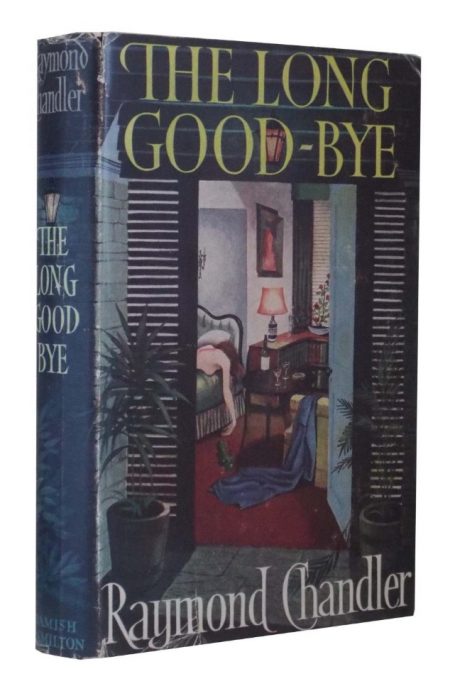
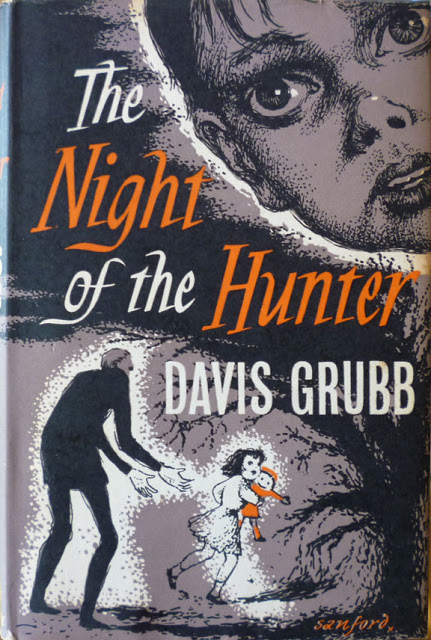

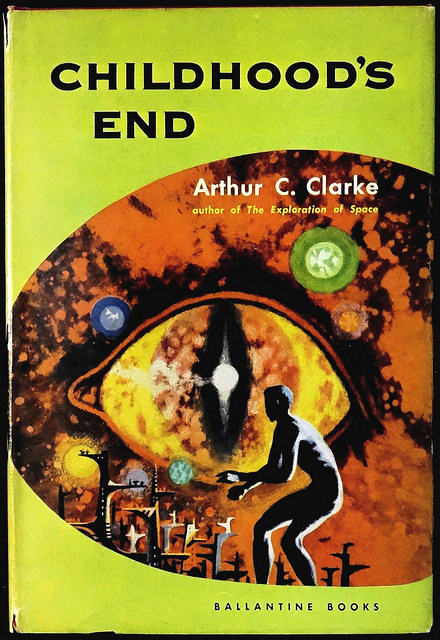

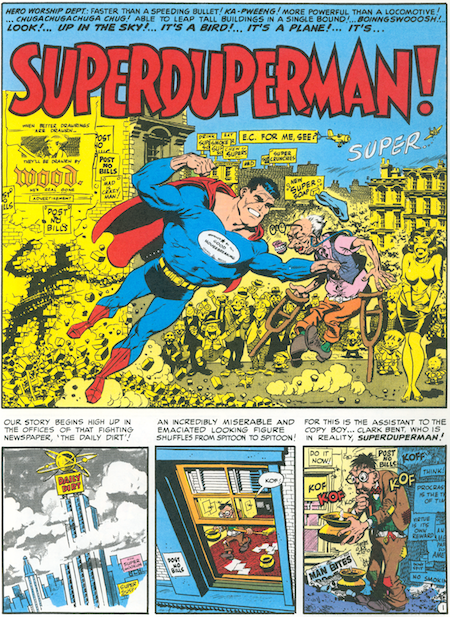
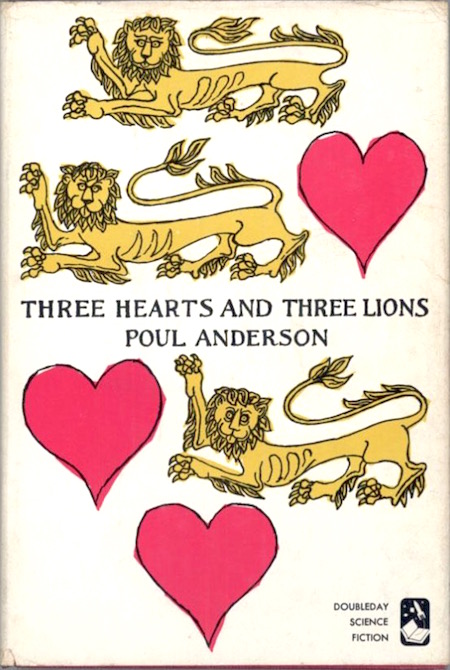
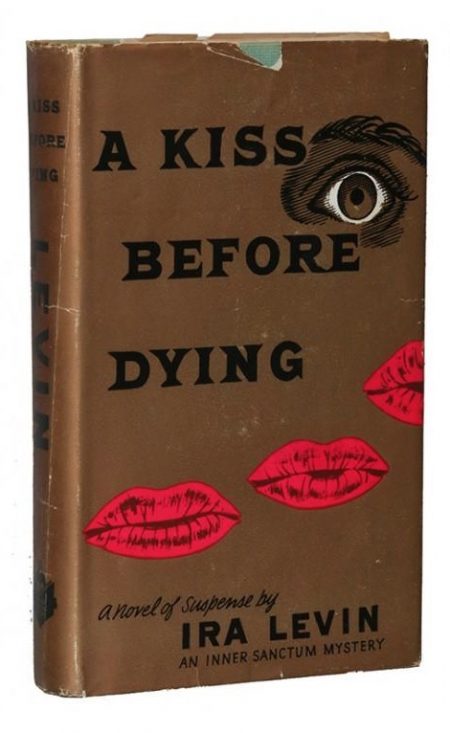
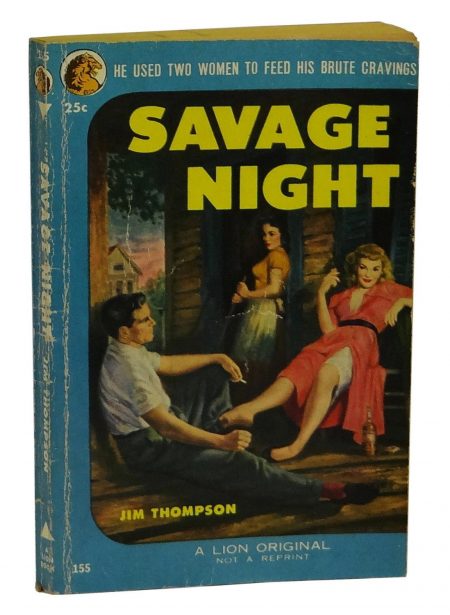
JOSH GLENN’S *BEST ADVENTURES* LISTS: BEST 250 ADVENTURES OF THE 20TH CENTURY | 100 BEST OUGHTS ADVENTURES | 100 BEST RADIUM AGE (PROTO-)SCI-FI ADVENTURES | 100 BEST TEENS ADVENTURES | 100 BEST TWENTIES ADVENTURES | 100 BEST THIRTIES ADVENTURES | 75 BEST GOLDEN AGE SCI-FI ADVENTURES | 100 BEST FORTIES ADVENTURES | 100 BEST FIFTIES ADVENTURES | 100 BEST SIXTIES ADVENTURES | 75 BEST NEW WAVE SCI FI ADVENTURES | 100 BEST SEVENTIES ADVENTURES | 100 BEST EIGHTIES ADVENTURES | 75 BEST DIAMOND AGE SCI-FI ADVENTURES | 100 BEST NINETIES ADVENTURES (in progress) | 1994 | 1995 | 1996 | 1997 | 1998 | 1999 | 2000 | 2001 | 2002 | 2003 | NOTES ON 21st-CENTURY ADVENTURES.
